Explore the Stunning Features of Hyprland: An Impressive Tiling Desktop Environment for Linux
Key Notes
- Hyprland provides a sleek and dynamic window management experience using Wayland.
- The installation process varies across distributions, with a special build process required for Ubuntu.
- Customizing Hyprland involves editing configuration files for keybindings, layouts, and monitor settings.
Transform Your Desktop Experience with Hyprland
Hyprland stands out as an innovative window manager that integrates beautiful design with dynamic functionality in the Linux environment. Utilizing Wayland, Hyprland is engineered to provide a faster and more secure computing experience compared to traditional systems.
Why Choose Hyprland as Your Window Manager
Hyprland offers comprehensive capabilities as an all-in-one window management solution. Packaging a dynamic tiling composer along with an application launcher and shortcut daemon, it caters to users seeking immediate functionality.
This window manager excels with multi-monitor setups, ensuring smooth scaling and resolution adjustments, leading to a user-friendly experience across high-resolution displays.
Additionally, Hyprland’s integrated package manager eases the installation of customizable plugins, which can enhance your usage with tailored features like wallpapers and title bar modifications.
Installing Hyprland on Linux
Before proceeding with the installation of Hyprland, your Linux system needs to be up-to-date. For Fedora users, execute:
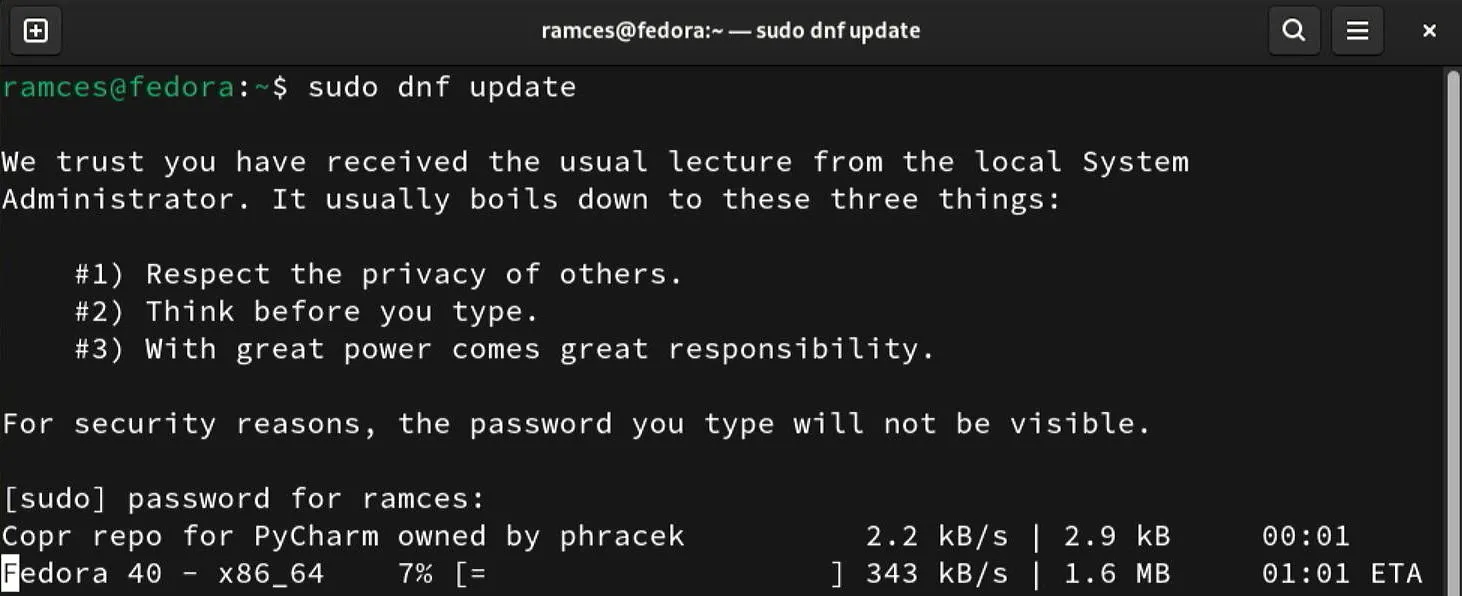
Arch Linux users should run:
sudo pacman -Syu
Next, install Hyprland from your distribution’s repository. Use:
sudo dnf install hyprland
For Arch Linux:
sudo pacman -S hyprland
Building and Installing Hyprland on Ubuntu
Hyprland is not found in the Ubuntu repositories; hence, you’ll need to compile it directly. Start with updating your system:
sudo apt update && sudo apt upgrade
Next, install required dependencies:
sudo apt install build-essential cmake pkg-config
Navigate to your home directory and execute the following command to build Hyprland:
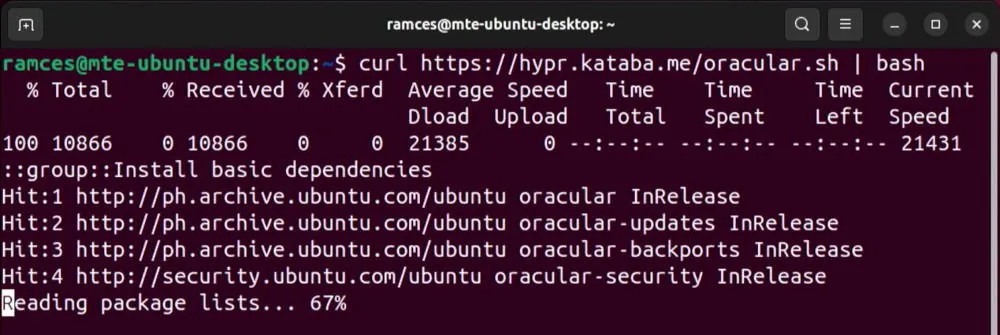
Launching Hyprland for the First Time
After successful installation, log out of your current session. Click on the Cog Wheel icon on the login screen, then select “Hyprland” from the available desktop options.
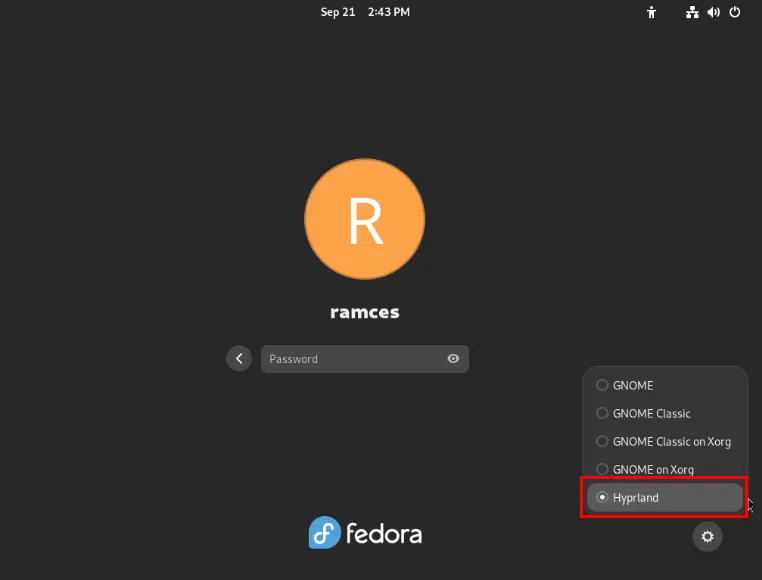
Upon logging into your user account, wait briefly as Hyprland generates the necessary configuration files for your environment.
Once the window manager appears with its default wallpaper, press Win + Q to open a terminal session.
You can also launch applications within Hyprland. Use Win + R and enter an application name, such as “firefox, ” to open it in your current workspace, as demonstrated:

To close a window, hover over the one you want to dismiss and press Win + C.
Managing Workspaces in Hyprland
Hyprland supports 9 default workspaces that you can navigate by pressing Win plus a number key, for example, Win + 5 switches to the fifth workspace.
Moving windows between different workspaces is easy: highlight the window you wish to relocate and press Win + Shift followed by the desired workspace number.

Hyprland also features a specialized workspace on each monitor for decluttering your main workspace. To transfer a window here, select it and press Win + Shift + S.
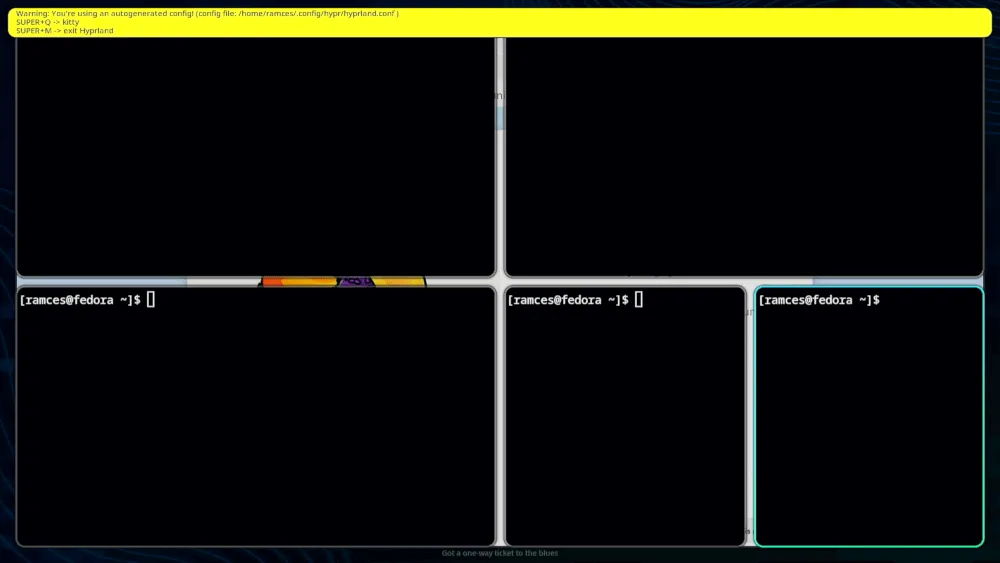
To hide or show a window, press Win + S, and to revert windows from your special workspace to the regular desktop, use Win + Shift + 1.
Configuring Hyprland
Hyprland’s configuration files allow for extensive customization of your desktop experience. Let’s walk through some basic customization options.
To begin, you may wish to disable the autoconfiguration warning. Access the Hyprland configuration directory and edit the pertinent config file with your preferred text editor:
Search for the autogenerated line, altering its value from “1” to “0.”

Confirm your changes by saving the configuration file with Ctrl + O.

Changing the Default Window Layout
Hyprland comes with two preset window layouts: one resembling a binary tree (bspwm) and the other similar to a stacking layout (dwm).To edit the window layout, press Ctrl + W and type general {.
Your cursor will be placed within Hyprland’s general settings. Locate the “layout” variable and modify it to “dwindle” for a bspwm-style or “master” for a dwm-style layout.
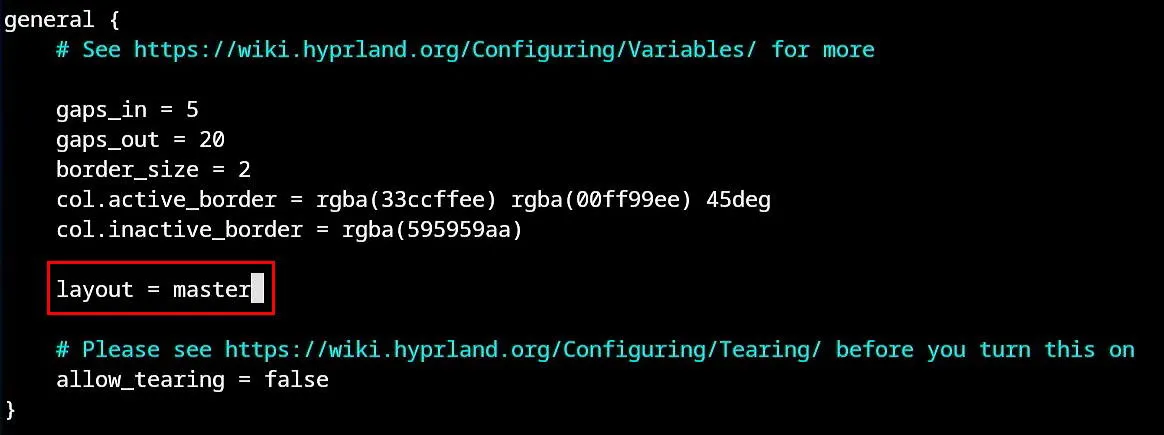
Ensure to save and apply the changes using Ctrl + O. Experiment with creating multiple new windows to see your layout changes in action.
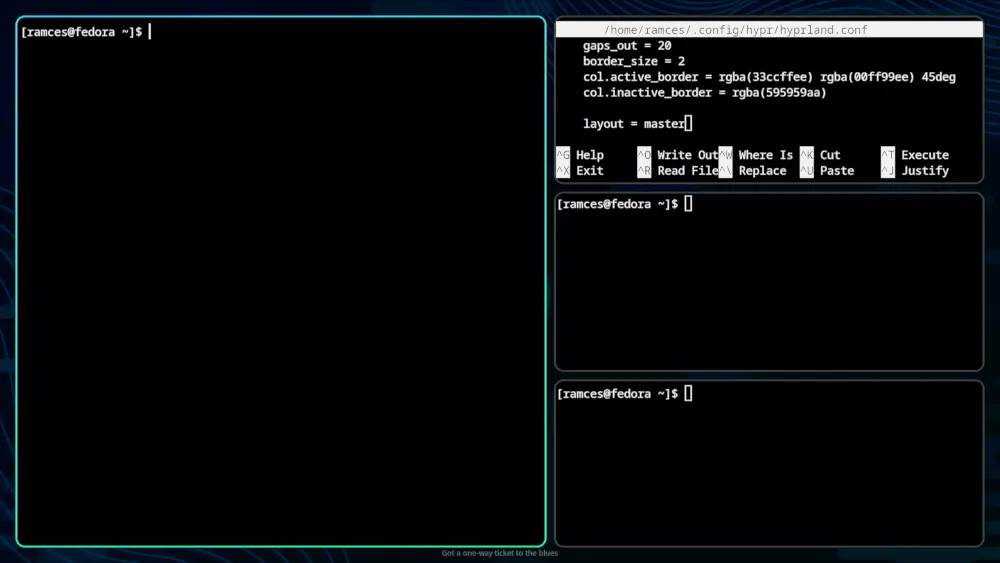
Creating a Custom Keybinding in Hyprland
You have the ability to define custom keybindings in Hyprland by editing the config file. To do this, press Ctrl + W and type bind =.

Find the line below “togglesplit” and input the function you wish to assign. To enable a “window swap” feature for the dwm-style mode, incorporate the following line:
bind =
Furthermore, you can modify existing bindings by changing the $mainMod value from “SUPER” to “ALT” to switch your modifier key:

Tweaking the Default Screen Resolution in Hyprland
A unique feature of Hyprland is the ability to change your monitor’s resolution on the fly without restarting. This is especially useful for laptops that often connect to various displays.
To adjust your monitors, first list all connected displays:
hyprctl monitors
Note the monitor name and available modes from the command output, then return to your config file to make changes.
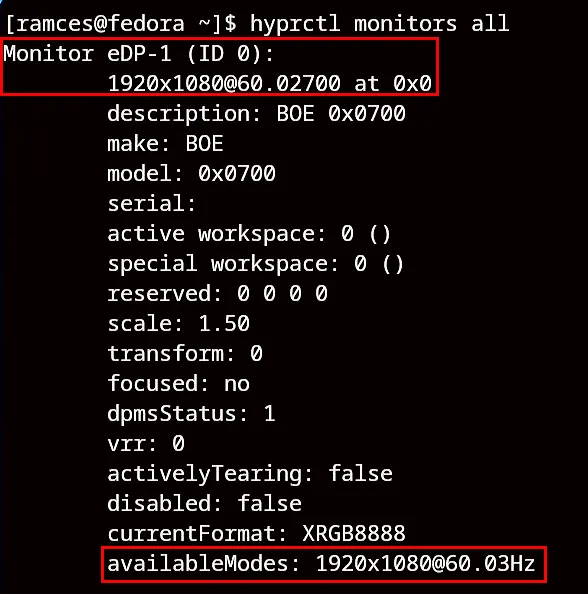
Locate the “MONITORS” section and set the “monitor” variable to your desired resolution, for example:
monitor eDP-1, 1920x1080, 60Hz
To add another monitor, duplicate the monitor variable and modify the details accordingly.
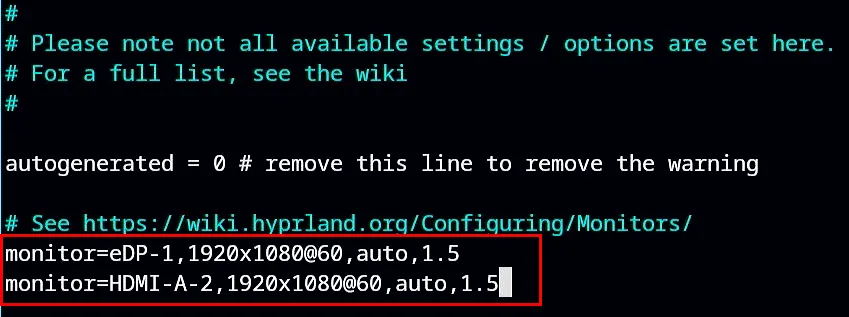
Be sure to save your updated configuration with Ctrl + O and observe the applied settings.
Summary
In this comprehensive guide, we covered the installation and personalization of the Hyprland window manager on Linux. With a unique setup process for each distribution and ample configuration options, Hyprland allows for a tailored and efficient desktop experience. By mastering its key features and customizations, you can optimize your Linux environment to suit your specific needs.
Conclusion
Hyprland proves to be an exceptional choice for Linux users seeking a modern and dynamic window management experience. Its functionality, ease of installation across various distributions, and extensive customization make it a compelling alternative to traditional desktop environments. Explore Hyprland further and elevate your Linux desktop today!
FAQ (Frequently Asked Questions)
Is Hyprland suitable for beginners?
Yes, Hyprland is designed to be user-friendly while offering advanced configurations for users who want to explore deeper customizations.
Can I uninstall Hyprland easily?
Yes, Hyprland can be uninstalled through your package manager just like any other software package on your Linux system.
What are the minimum system requirements for Hyprland?
Hyprland requires a modern Linux distribution with Wayland support. Specific hardware requirements may vary based on your use case and display capabilities.